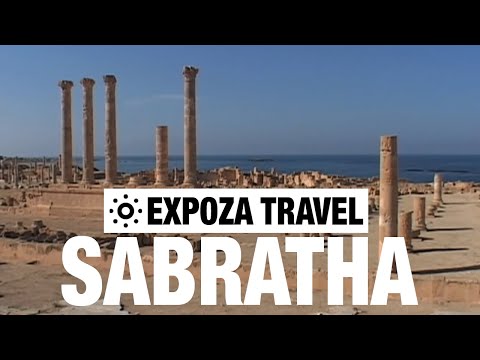
Nestled along the Mediterranean coast of Libya, the ancient city of Sabratha stands as a testament to the grandeur and architectural prowess of the Roman Empire. Once a thriving metropolis bustling with traders, scholars, and artists, today Sabratha offers a serene and poignant look at history through its remarkably preserved ruins. For history enthusiasts and casual tourists alike, a virtual travel video guide can serve as an informative and visually captivating introduction to this UNESCO World Heritage site. Here’s what to expect from an engaging Sabratha vacation travel video guide.
#### Discovering Ancient Wonders
The video guide begins with an aerial view of Sabratha’s most iconic structure, the magnificent Amphitheatre. Built in the 2nd century AD, this structure could seat up to 5,000 spectators in its heyday. As the camera sweeps over this architectural marvel, a narrator provides insights into its historical significance and architectural details, such as the tiers of seating and the stage backdrop decorated with columns and statues.
As viewers are taken on a virtual walk through Sabratha’s streets, they encounter other key highlights:
– **The Capitolium**: This temple dedicated to Jupiter, Juno, and Minerva stands as a symbol of Roman religious life. The guides explain how these deities were central to both public and private life in ancient Rome.
– **The Baths**: Featuring intricate mosaics and sophisticated heating systems underneath their floors, these baths illustrate the luxury that once characterized daily life here.
– **The Museum**: Housing artifacts recovered from the site including statues, mosaics, and everyday objects offering deeper understanding of daily life in Sabratha.
#### Engaging Storytelling
Throughout the video guide, expert historians shed light on Sabratha’s history from its founding by the Phoenicians through its development under Roman rule into one of Africa’s key western outposts. The narrative is richly adorned with tales of trade across Mediterranean lands that brought prosperity and cultural exchange.
#### Visual Splendor Enhanced by Modern Technology
Utilizing drone footage alongside HD ground shots allows the viewer not just to see but almost experience walking through these historic ruins themselves. 3D reconstructions intermittently blend into real footage showing what structures would have looked like at their zenith. This blend not only educates but also immerses viewers into ancient times.
#### Interactive Elements
A significant advantage of digital travel guides are their interactive components. Viewers might find clickable elements within videos that offer more detailed information or anecdotes about specific relics or areas within Sabratha—ideal for those whose curiosity goes deeper than surface-level exploration.
#### Planning Your Visit
Towards the end of the video guide viewers are provided with practical information about traveling to Libya including visa requirements (subject to change), local customs that tourists should be aware of to ensure respectful visits plus safety tips considering Libya’s complex political situation.
Furthermore benefits include recommendations for local tour operators specializing in historical tours guaranteeing insightful excursions guided by knowledgeable locals.
#### Conclusion
A vacation travel video guide on Sabratha offers more than just a visual feast; it’s an educational journey that brings history alive making it accessible right from one’s home or preparing travelers for what they might experience during actual visits. As technology bridges gaps between time zones and geographical boundaries experiencing places like Sabratha has never been easier or more engaging providing both virtual tourists or prospective visitors all tools necessary for exploring this jewel of Libyan heritage optimally whether virtually or physically.
